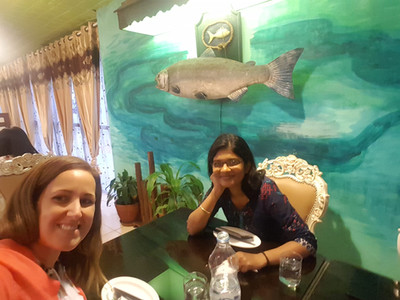A Year in the Life of an IAOMS Fellow
- Sahar Nadel

- Apr 11
- 3 min read
My Fellowship Journey: Dr. Sahar Nadel
Article from Israel
I will always remember that Friday afternoon: on my way back home from the beach I got a call from a US phone number. On the line was a member of the IAOMS staff, congratulating me on becoming the next IAOMS fellow in cleft and craniofacial surgery. I could not believe what I just heard, so I kept asking her, ”Are you sure? Is it me? Is it final?”
Since I was a dental student, I knew I wanted to be a maxillofacial surgeon and to be more precise, an oral and maxillofacial surgeon that treats facial deformities. During my residency I found the subject fascinating, tried to learn as much as I could about the subject and get myself involved in as many clinical cases and research of clefts and deformities as possible, attending to every meeting and conference that discussed it. So, applying for the IAOMS Foundation fellowship program was the natural course for me to achieve my goal of becoming a specialist in the field of cleft lip and palate and craniofacial surgery.
Before arriving to India, I reached out to the IAOMS fellow of that year, Dr. Amel Eltayeb, who was happy to help me with all administrative missions, giving me extra tips regarding accommodation and overall living advices for my upcoming year of living in India. Amel and I stayed in contact, she was my “go-to contact person” regarding every question or dilemma I encountered throughout my entire year of fellowship, and we even got to meet in person at the ICOMS 2019 conference in Rio, Brazil.
When arriving to India, I began my fellowship journey working for the first 6 months in Bhagwan Mahaveer Jain Hospital, Bangalore followed by 6 months in GSR hospital, Hyderabad. The hospitals' staff, from administrators to nurses and doctors, were very welcoming, all trying to make my move to a foreign country as easy as possible. The local fellows became not only my colleagues but also my translators, realtors, food guides, and close friends.
I soon learned that the operation room (OR) is actually called the operation theater (OT), that my usual OR clogs must be swapped with OT flip flops and that you should always make sure you get some actual food (like Masala Dosa) first thing in the morning or you will starve by evening time since the work is hectic – you start with morning rounds. Also, everything takes a bit longer as you must be translated when examining the patients and talking to their families. And then, for most days, to the operation theater, where you will have between 5 to 10 cases a day!
At the beginning, as the IAOMS fellow, you start with getting back to basics: learning how to drape for every different surgery, how to assemble the Dingman retractor, and how to assist. Then, step-by-step, you will get to do your first stitch, then cut, and eventually to become the head surgeon – performing all steps of the procedure while making sure all your partners at the operation theater know what the next step is and how to manage the patient during the procedure. This includes all post-OP management as well.
My fellowship year has been one of the most challenging years of my professional life, but also one, if not the most, rewarding one. It is a once in a lifetime experience.






















Comments